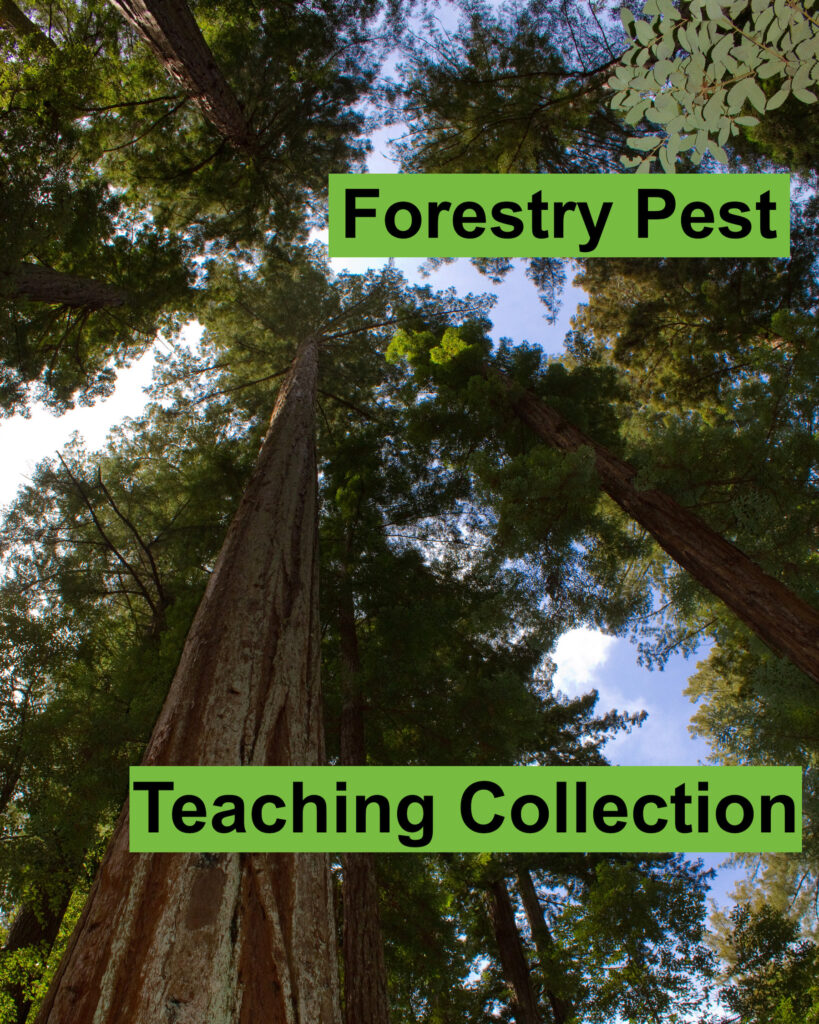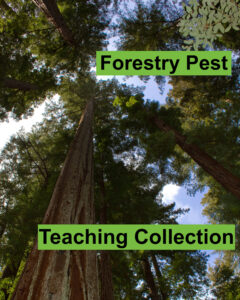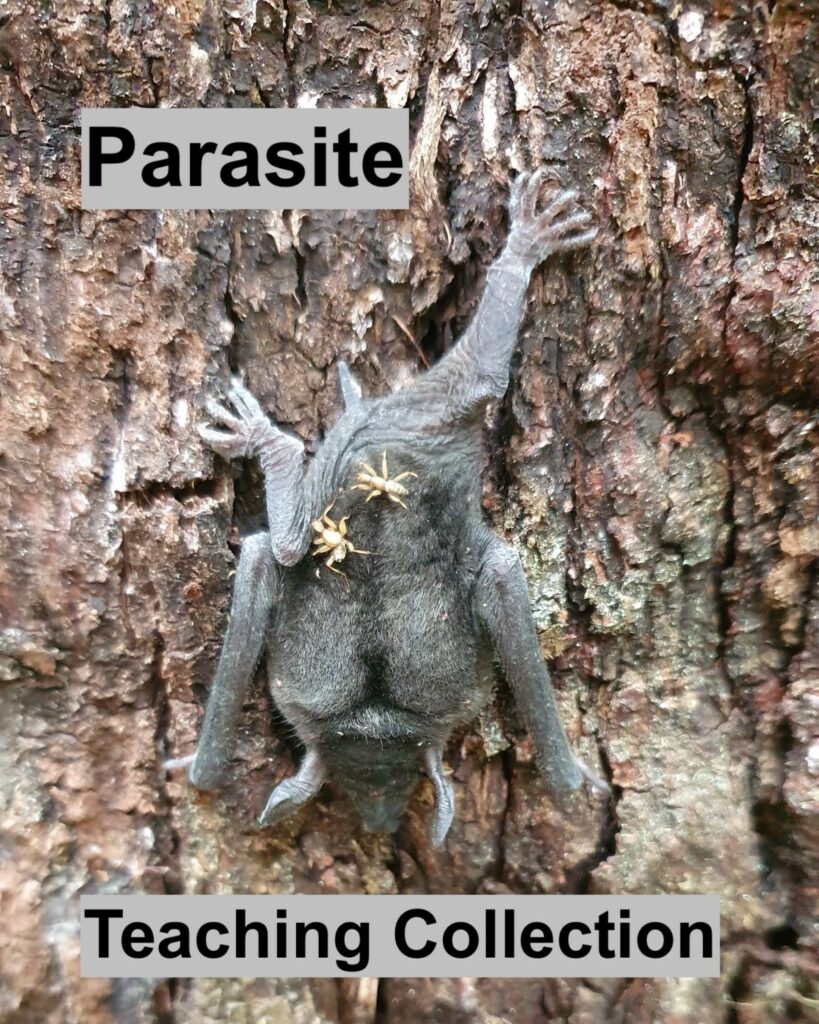Forestry Pest Collection
Trees are one of the most important plants covering ~30% of the Earth’s surface. While trees are best known to produce life sustaining oxygen and draw in carbon dioxide, they in fact provide many significant ecosystem resources. Some trees are very large and support a wide range of life like the coast redwood tree that harbors a variety of plants and animals from their rootbase and up hundreds of feet into their canopies. Many tree also produce a variety of fruit, nuts, and seeds which provide food for countless species of animals. Trees as a human resource serve as structural material and paper products for homes with the American Forest and Paper Association estimating that U.S. forests alone account for 4% of the manufacturing GDP (~$300 billion!).
Of the many animals and plants found in forests, insects are undoubtedly the most abundant! Insects such as bees, wasps, butterflies and moths, beetles, earwigs, and true bugs utilize trees in many ways including camouflage, shelter, food, and a place for reproduction. Although the majority of insects found in forests are beneficial, unfortunately, others can be major pests and with the current climate crisis these insect pests only extrapolate the stress on forests.
Pest insects like the mountain pine beetle (Dendroctonus ponderosae), forest tent caterpillar (Malacosoma disstria), and asian longhorn beetle (Anonplophora glabripennis) cause added stress and damage to trees which often leads to mortality among forests. Depending on the population and spread of forest insect pests, large patches of dying trees can even be seen when flying overhead. Additionally, invasive insects can become a serious threat to forests very quickly and some examples like the emerald ash borer (Agrilus planipennis) and the asian longhorn beetle (Anonplophora glabripennis) can destroy entire populations of trees.
There are many benefits that forests provide for our ecosystem and it is important to keep them protected. Identifying forest pests correctly is a major first step in the fight against these pests. To aid in this BioQuipBugs is proud to offer a forestry pest kit! This kit includes 22 specimens of forestry pests that can be found in the BioQuipBugs collection. This beneficial kit serves as a great teaching resource for forestry managers, museums, and educational facilities around the world.
Specimens come either pinned or preserved in alcohol in clear, archival-quality glass vials with poly-seal caps to prevent evaporation. All specimens are sent with alcohol-proof, typed specimen data labels, and species identification tags. Pinned kits are sold in riker-style frames to protect the specimens while being handled, but still allow their easy viewing by students.
Image used under the Creative Commons Attribution 2.0 Generic license. Attribute: Brian Gratwicke from DC, USA
| Quality | A1- |
|---|
$165.00 – $420.00





